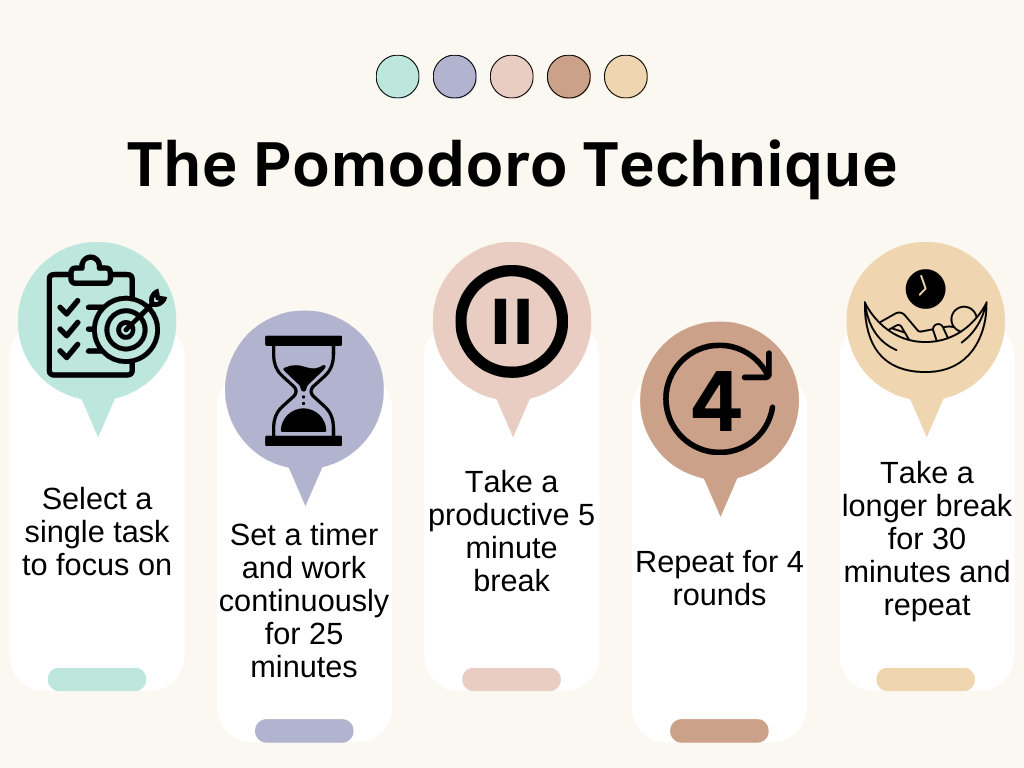The Pomodoro Technique for studying is a time management method developed by Francesco Cirillo in the late 1980s. It is a popular approach for studying and increasing productivity. The technique is named after the Italian word “tomato” because Cirillo initially used a tomato-shaped kitchen timer to track his work intervals. Here’s how the Pomodoro Technique works:
- Choose a Task: Select the task you want to work on or study.
- Set a Timer: Set a timer for 25 minutes (the traditional Pomodoro interval), also known as one Pomodoro.
- Work on the Task: Focus on the chosen task and work on it diligently until the timer goes off. During this time, avoid all distractions and interruptions.
- Take a Short Break: When the timer rings, take a short break of about 5 minutes. Use this time to relax, stretch, or do something unrelated to the task.
- Repeat: Once you’ve completed one Pomodoro cycle (25 minutes of work followed by a 5-minute break), you can decide whether to continue with another Pomodoro or take a longer break. After completing four Pomodoros, it’s recommended to take a longer break of 15-30 minutes.
- Track Your Progress: Keep a record of the Pomodoros you complete. This can help you monitor your productivity and identify areas you might need to improve.

The Pomodoro technique for studying is effective for several reasons:
- It encourages focus and concentration during short bursts of work.
- Regular breaks help prevent burnout and mental fatigue.
- It provides a structured approach to time management, making it easier to track your progress.
- It can help you manage distractions and procrastination.
You can adjust the duration of the Pomodoro intervals and breaks to suit your preferences and attention span, but the traditional 25/5 minute intervals work well for many people. The technique is a flexible and adaptable way to enhance your study and work efficiency by managing your time more effectively.
If you want to try it out, check out these helpful apps to keep you motivated.




